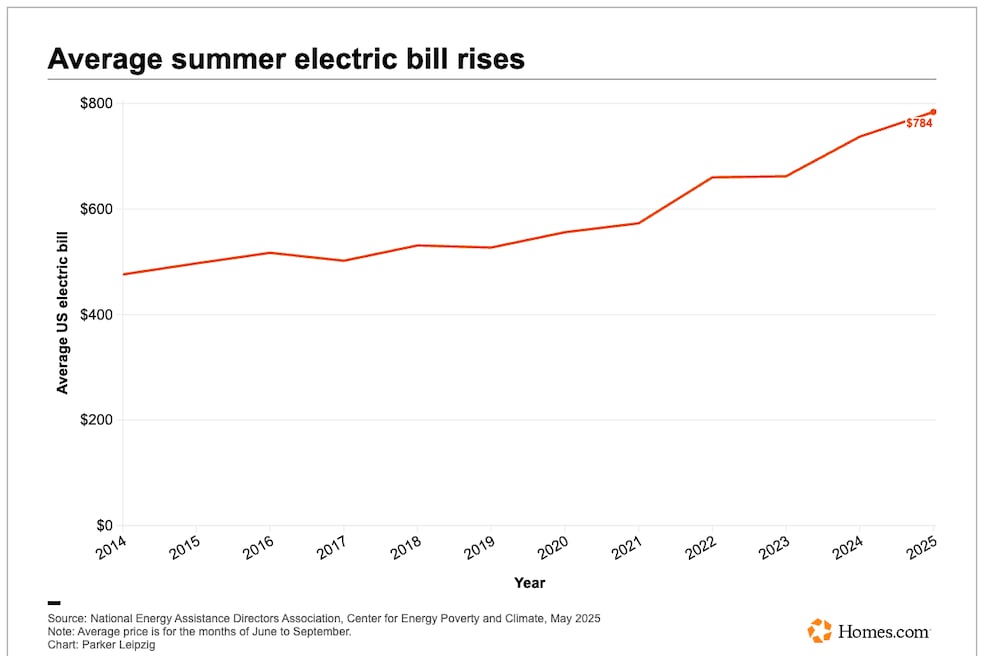Homeowners will likely face another year of record-high prices for cooling their homes.
The average cost across the country for electricity to cool homes from June to September is projected to reach $784, up 6.2% compared to the summer-cooling period last year, according to the National Energy Assistance Directors Association, a group representing state officials administrating federal fuel bill assistance, and the clean energy advocates at the Center for Energy Poverty and Climate, .
That would be the highest burden on U.S. homeowners in terms of electricity costs for cooling in at least 12 years.
Electricity prices have been increasing faster than the average inflation rate as summer temperatures grow hotter, "reflecting the continuing impact of climate change and requiring additional energy to cool indoor spaces," according to the report.
Low-income households would be hit the hardest by energy price increases. The report states that low-income households shell out 8.6% of their income on energy costs, almost three times the rate for non-low-income households that spend 3% of their income on the same utility.
The potential rise in prices comes as the federal government is cutting its support to cover cooling needs for low-income families. The government reduced funding for the Low Income Home Energy Assistance Program from $6.1 billion in fiscal year 2023 to $4.1 billion this fiscal year. This summer only 25 states — along with the District of Columbia — -plans to offer federal cooling assistance to their residents.
Mark Wolfe, executive director of NEADA, urged Congress in April to boost funding for families back to the $6 billion total and add a $1 billion contingency fund.
"Contingency funding will allow the administration to provide additional targeted resources for extreme weather events or volatility in energy prices," he testified.


